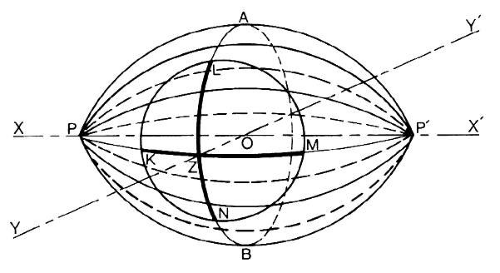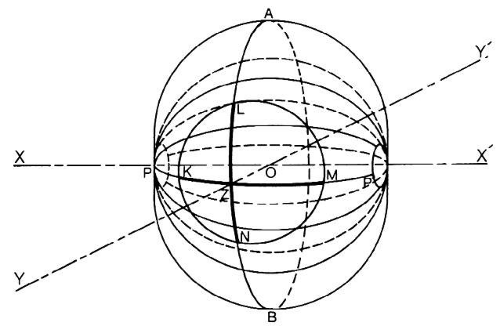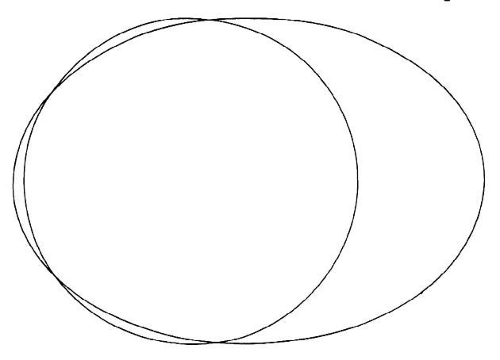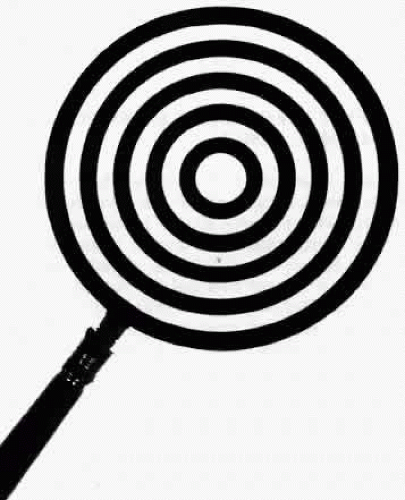Aspheric Lenses
David Volk
A spherical refracting surface is of constant curvature, ie, it has a specific radius of curvature. Any ophthalmic refracting surface other than a spherical refracting surface comes within the classification of aspheric or nonspherical.
TYPES OF ASPHERIC SURFACES
There are three main types of aspheric surfaces used in ophthalmology:1 toric surfaces, which are used primarily in lenses for the correction of ocular astigmatism;2 surfaces which vary in a continuous and regular manner from a specific central or apical point to the periphery, which surfaces are used in the strong plus power lenses for the correction of aphakia and subnormal vision and in the condensing-image forming lenses of indirect ophthalmoscopy; and3 progressive surfaces which increase in refractive power in a continuous and regular manner from an upper portion to a lower portion of the surfaces, such surfaces being used in lenses for the correction of presbyopia.
SPHERICAL AND TORIC LENSES
Lenses composed of two spherical surfaces are called spherical lenses. Spherical ophthalmic lenses are easily made; each surface of the lens can be ground with abrasive against an opposing metal tool of equal but opposite curvature. Since the lens surface and the tool surface are both of constant curvature, the lens may be moved about and rotated about a lens axis during the grinding procedure; therefore, the surface is more precisely ground. The polishing procedure is identical to the grinding procedure, the metal grinding tool is covered with a soft polishing pad, and the polishing abrasive is extremely fine.
An ophthalmic lens composed of a spherical surface and an opposing toric surface is called a toric lens. The toric surface has two principal meridians; the difference in refracting powers of the two principal meridians represents the astigmatism of the surface (see Figures 11 and 12). For practical purposes, the astigmatism of the toric surface of a toric lens can be assumed to be constant over the entire lens surface. The grinding and polishing of a toric surface is accomplished with opposing lens and tool having oscillatory and translational movements with respect to each other but without rotation of either.
Both spherical and toric surfaces are easily made; ophthalmic lenses with these surfaces are used almost exclusively.
ABERRATIONS OF SPHERICAL AND TORIC LENSES AND THEIR CORRECTION
There are four important aberrations which affect vision through spherical and toric ophthalmic lenses: (1) Chromatic aberration, in which the dispersion of light into its various colors by a lens is inherent in the nature of the refracting material and of the light itself. The most that can be done with ophthalmic lenses to reduce chromatic aberration is to utilize refracting material having a low dispersive quality. (2) Curvature of the field, in which there is excessive spherical refractive power in the lens for lateral gaze through it. (3) Marginal astigmatism, in which there is astigmatism in oblique gaze through lateral portions of the lens. (4) Distortion, in which there is nonuniformmagnification of the field of vision through the lens.
The monochromatic blurring aberrations, curvature of the field, and marginal astigmatism, in both spherical and toric lenses, are reduced by appropriate bending of the lens, ie, the relative curvatures of the two surfaces of the lens, known as coflexure. Corrected curve spherical and toric lenses which permit the widest and clearest field of vision depend on specific coflexures for specific powers of the lenses to minimize the blurring aberrations. The appropriate coflexure also reduces distortion but does not eliminate it.
The correction of aberrations of spherical lenses by coflexure is quite effective for minus power lenses as strong as -20.00 D and for plus power lenses up to +7.50 D. For lens powers above +7.50 D, aberrations cannot be reduced satisfactorily by coflexure. Excessive lateral power and lateral astigmatism can be corrected only by gradually changing the curvature of one of the surfaces of the spectacle lens, usually the anterior surface. By a continuous and regular reduction in curvature from the apex of the front surface to its periphery, both lateral power excess and lateral astigmatism are reduced. Such a surface is shaped like the end of an oval or egg, ie, ellipsoidal. Strong plus power lenses such as cataract lenses which have ellipsoidal front surfaces combined with spherical or toric back surfaces are far superior to spherical and toric lenses of the same back vertex power: the field of vision for given size lenses is somewhat larger in the aspheric lenses due to the more uniform magnification, and vision is considerably clearer throughout the field.
The grinding technique used for spherical lenses cannot be applied to aspheric lenses. Although it rotates about its own axis during the grinding and polishing, the spherical lens moves with respect to the axis of the grinding tool so that the lens and tool axes do not coincide and are continually changing their angular relationship with respect to each other. In the grinding procedure, broad areas of the rotating grinding tool and the rotating lens are in contact and precise surfaces are obtained. In the grinding of aspheric surfaces other than toric surfaces, only limited areas of the surface of the grinding tool can be in contact with the lens surface; it is difficult to produce and maintain the desired surface contour of an aspheric lens throughout the grinding and polishing procedures. Various techniques are utilized to overcome the difficulties in the production of aspheric surfaces. All aspheric lenses other than toric lenses are high in cost as compared with spherical lenses, and it is the cost which has limited the use of aspheric ophthalmic lenses.
THE CORNEA
The anterior surface of the human cornea closely resembles an ellipsoid, ie, highly curved centrally and flattening toward the periphery (Fig 1). The central area of the anterior surface of the cornea may be free of astigmatism, resembling a spherical surface, while the remainder of the cornea becomes increasingly flat and astigmatic peripherally. The central, practically spherical, area subserves central vision; such a cornea is said to be free of astigmatism.
Alternatively, the central area may resemble a toric surface; such a cornea is said to be astigmatic, regardless of the peripheral portions of the cornea.
An idealized version of a principal section of the anterior corneal surface is shown in Figure 2, wherein a spherical surface of a specific radius of curvature matches or “osculates” the central area of the ellipsoidal cornea. The two surfaces appear to be in contact over a relatively large central area.
 Fig. 2. A circular section osculating an elliptical section at apex of ellipse. Radius of curvature of circle is equal to apical radius of curvature of ellipse. |
The simplest instrument for studying the corneal contour is a keratoscope, such as the Placido’s disc (Fig 3), which consists of a circular target with alternate black and white annuli and a handle. Usually a +5.00-D lens is placed behind an aperture in the center of the disc to enable the examiner to see the image of the target produced by specular reflection from the smooth tear film overlying the cornea. The target, either illuminated indirectly or self-luminous, has an image formed of it by the cornea which is observed through the lens of the instrument. Figure 4 illustrates the appearance of the central corneal image of the target when there is no central astigmatism; the image consists of a series of successively larger circular white rings centered about the corneal apex. Figure 5 demonstrates the appearance of the image of the target as produced by the astigmatic periphery of the cornea. When the central cornea is astigmatic the images of the target rings are elliptic, with the long axis of each of the ellipses along the flatter meridian of the cornea.
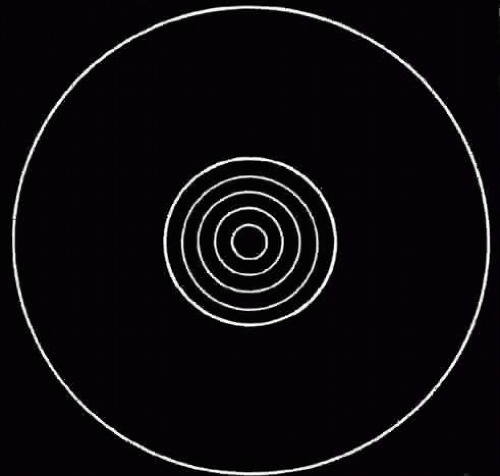 Fig. 4. Representation of image of annuli of keratoscope target as formed by central portion of cornea which is free of astigmatism.
Stay updated, free articles. Join our Telegram channel
Full access? Get Clinical Tree
 Get Clinical Tree app for offline access
Get Clinical Tree app for offline access

|
